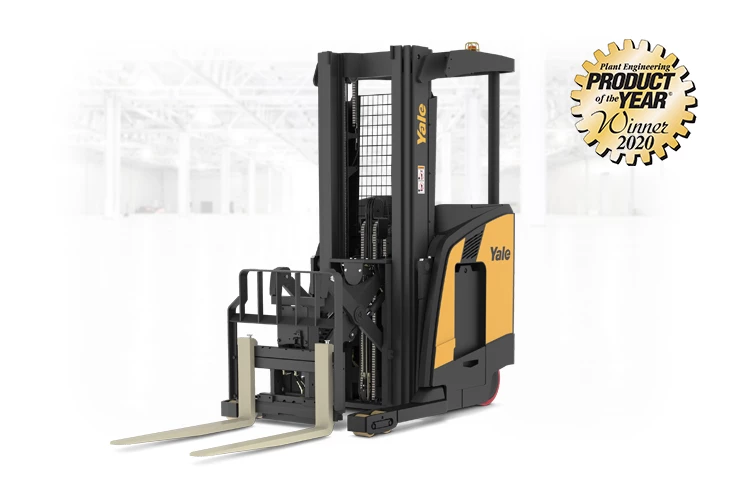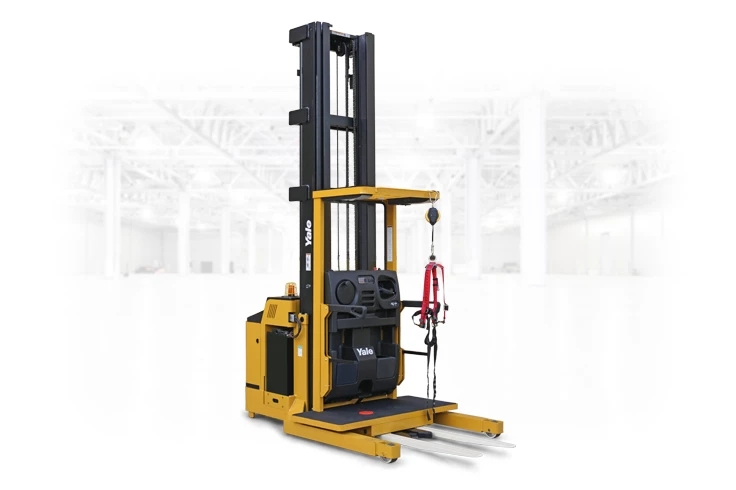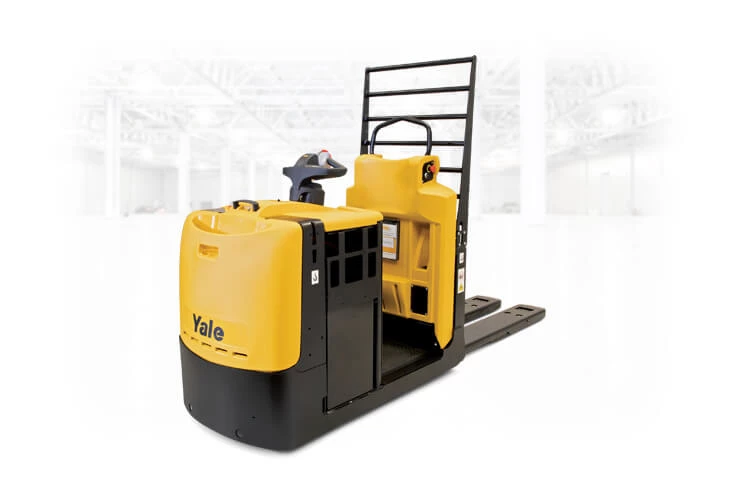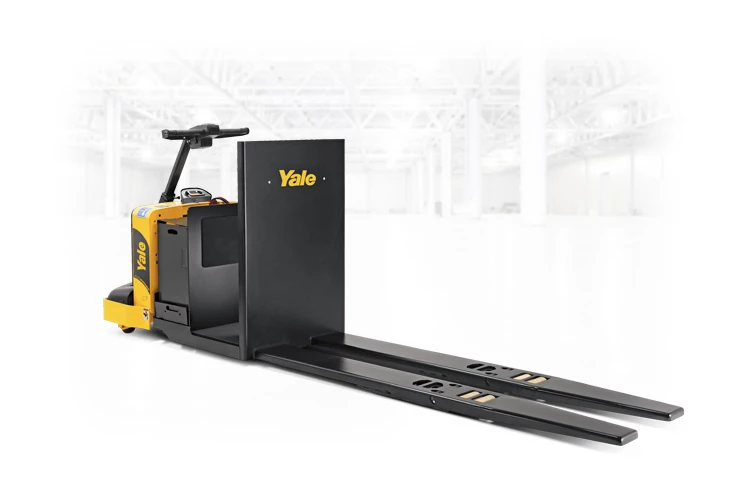
Narrow aisle reach trucks
Take performance to new heights
NR/NDR-DC/EC
With products on kitchen counters across the nation, Hamilton Beach designs, markets and distributes a multitude of small electric household appliances like slow cookers, coffee makers and food processors. The company also caters to bars, restaurants and hotels with a commercial lineup of blenders, drink mixers, coffee makers and other solutions.
To keep orders moving to retailers and directly to consumers, Hamilton Beach locates its U.S. distribution operations in close proximity to one of the busiest logistics and transportation hubs in the country – Memphis, Tennessee. At their existing site, Hamilton Beach had long relied on Yale® lift trucks and service from their local dealer, Black Equipment. But the relationship deepened when Hamilton Beach relocated to a new facility in nearby Byhalia, Mississippi and enlisted the help of Yale Lift Truck Technologies to optimize warehouse operations.

“At the old facility, everything was stored on the floor with slip sheets, which only allowed one item per location.”
Jarrett Atkinson, Senior Distribution Director
Jarrett Atkinson, Hamilton Beach Senior Distribution Director, shares concerns Hamilton Beach faced with storage and distribution before their partnership with Yale.
$2,000,000
IN DAMAGES
Challenges that we face can be overcome by developing strategic goals to work towards. Select a goal below to read full details on the challenge presented.
GOAL
Maximize storage density
1
›
CHALLENGE
Floor stacking unpalletized loads in wide aisles limited vertical stacking and storage capacity.
›
GOAL
Prevent product damage
2
›
CHALLENGE
Unpalletized loads on slip sheets left a myriad of opportunities for product damage.
›
GOAL
Improve safety
3
›
CHALLENGE
Facility layout affected visibility, with blind corners and operators straining to see around loads.
›
GOAL
Enhance sustainability
4
›
CHALLENGE
Internal combustion engine (ICE) fleet contributed to noise pollution, truck exhaust and emissions.
›
GOAL
Optimize
e-commerce fulfillment
5
›
CHALLENGE
Existing small package fulfillment operations struggled to keep up with e-commerce growth.
›

“Safety is something that's very, very important to us. . .”
Mike Bunge, VP of Global Supply Chain and Operations
Mike Bunge, VP of Global Supply Chain and Operations, details some of the main concerns with safety in warehouse and distribution environments for all aspects of the day-to-day business operations.
Jarrett Atkinson, Hamilton Beach Senior Distribution Director, shares how efficiency using Yale lift trucks positively affects day to day operations with running a Monday through Thursday work day with 10 hour shifts equaling 20 hour days.
0%

“Yale and Black Equipment [are] great providers to us. . . They provide 24-hour, on-call service. They've got local parts available.”
Mike Bunge, VP of Global Supply Chain and Operations
Mike Bunge, VP of Global Supply Chain and Operations, and Jarrett Atkinson, Senior Distribution Director, shares their experience with Yale and Black Equipment Service Departments and how our dedicated service is what keeps Hamilton Beach running.
The transformation to a high-density layout and a new fleet of Yale electric warehouse trucks yielded significant results, while reducing costs and increasing sustainability through fewer emissions and higher productivity.
x2
as many e-commerce, direct-to-consumer packages shipped
+
75%
decrease in utility expenses
+
80%
reduction in product damage

“And to top it off, we now have the most advanced lift truck technologies for a world-class operation.”
Mike Bunge, VP of Global Supply Chain and Operations
NR/NDR-DC/EC
FS030BF, OS030BF, OS030EF, SS030BF
MO55-80
MPC060-MPC080VG


